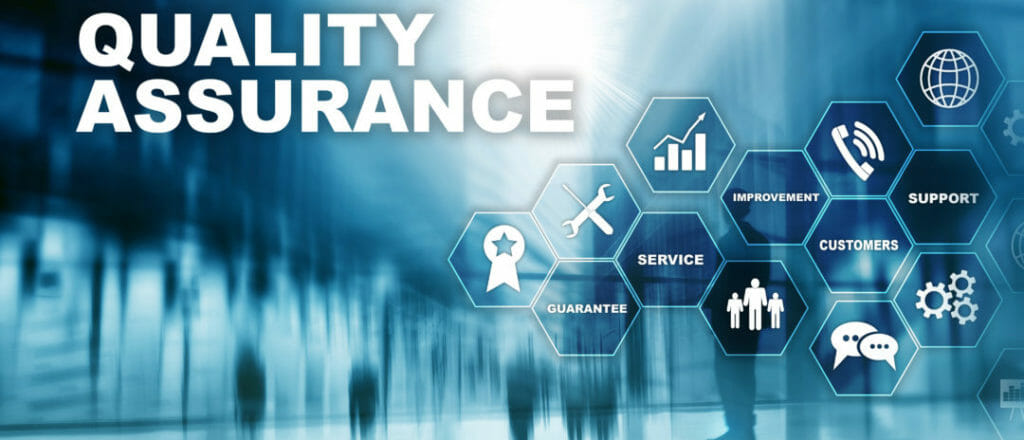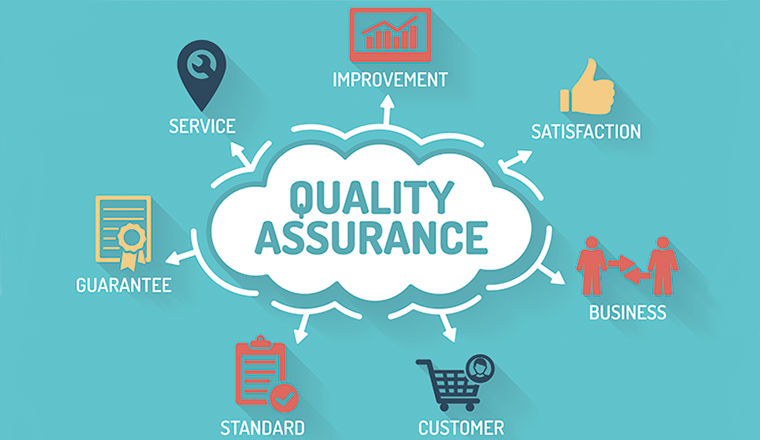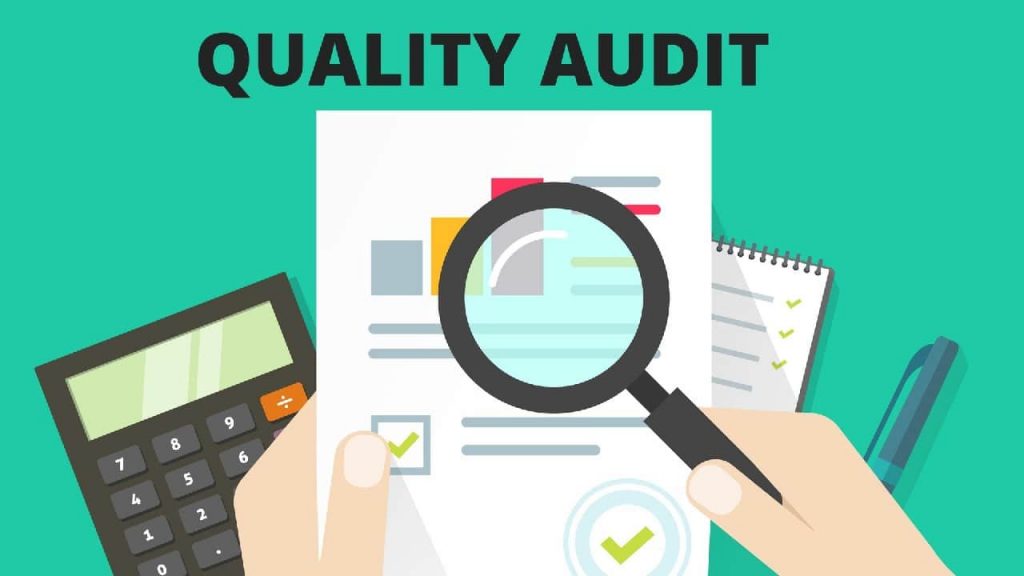Developers are not the only people on a software development team. There are also people like project managers, business analysts, and UI and UX designers. But the scope of the project will determine who should be on a team. Some members of small and medium-sized projects often have to do a lot of things that should be done by different positions in large projects with a lot of work.
In small and medium-sized businesses (SMBs), the quality assurance process (PQA) is usually run by QC (Quality Control) managers or team leaders. In larger corporations, quality assurance specialists are hired to plan processes or standards for all project teams.

In the end, it doesn’t matter who does this job; quality assurance is still done the same way and is an important part of software development. This blog post from Designveloper will give you more information about what this term means and how it works.
Definition of Quality Assurance (QA)
Quality assurance (QA) is a process-driven activity that involves suggesting and carrying out procedures or standards based on available management models (like ISO 9000 or CMMI) or Agile frameworks (e.g. Lean and Scrum development). It uses a set of techniques and tools to look at the production process and make any changes that are needed to meet the quality requirements of the project and keep mistakes from happening. Because of this, QA is a preventive way to improve process quality.

Recommended reading: Agile vs Kanban vs Waterfall: Definition, Purpose, Disadvantages, and Perform
But a lot of people still get quality assurance (QA) and quality control (QC), which are both parts of quality management, mixed up. Quality control (QC) is actually a process that is focused on the product. Both manual and automatic testing will be done on the finished product to make sure it meets engineering specifications before it is released. After testing, any flaws that are found will be fixed. So QC is also known as a way to make changes to improve the quality of a product.
Today, many companies make the mistake of putting the person in charge of quality assurance in charge of quality control, even though the skills needed for QA and QC are different. So, in order to avoid poor performance, product owners should know what each job entails. In particular, a QA engineer will plan the best ways to develop software for a project. This includes the Testing phase, where QC engineers will test products using different tools and the standards that are already in place. The first group will test how well the second group follows the process. If changes are needed, the results will be sent to the Project Manager. In the meantime, QC employees show the QC Lead or Manager the test results.
Recommended reading: UX Design Process: What You Need To Know
Process of Quality Assurance

To learn more about QA, we need to take a look at how it works. A quality assurance specialist will usually use the PDCA cycle or Deming wheel, which were both made by Edward W. Deming, to make sure quality. The process has four steps that happen over and over again:
Step 1: Plan
In this first step, which is very important, a QA technician will set clear goals for making high-quality final products and suggest the best ways to reach those goals. Also, he needs to know what problems could happen during the development phase and why they might happen.
Step 2: Do
As the name suggests, this stage lets you carry out the procedures you chose in the last stage. Many times, changes can be made and tested before data are gathered to see how well those changes work. Still, they should be done on a small scale and at a level that can be controlled.
Step 3: Check
The results of these small changes will be looked at and compared to the desired results to see where they are similar and where they are different. By looking at these kinds of data, it will be easier to see if they live up to expectations. If the answer is yes, QA experts can move on to the last step. But if the answer is “NO,” they have to go back to the first step. If the PDCA framework is used again, data and results should be put in a chart to see if the changes made make things better.
Step 4: Act or Adjust
It’s time to use what technicians found and make changes to the project based on what they found. During the execution phase, there is no way to make sure that no new problems or bugs will show up. So, this PDCA cycle can be used again and again to improve quality.
Recommended reading: 10 Best Practices in Software Project Management in 2022
Quality Assurance Methods
Some important tools and methods are often used in the QA process to make sure it works well:
1. Defining processes
In the first stage of a project, it is very important to find out what the organization’s procedures and standards are. These processes will help a whole development team stay on the right track, and they can be changed over time to meet changing needs. While this is going on, standards like IEEE or ISO 9000 will be the basis for the QA process. These standards will set requirements for how to start, plan, manage, and carry out the procedure.
2. Quality audit
During the development and design phase, this method is used to figure out how all the defined processes and standards work. Also, it checks to see if software products meet these standards, procedures, and plans.

3. Tool/methodology selection
Getting the right tools is just as important. For building software, different projects will need different tools. Here are some of the most important ones for setting up the QA process well:
1. Cost of Quality (CQQ)
This term has nothing to do with how much a company should spend to make a good product. CQQ, on the other hand, is a method that talks about what they lost when they didn’t make good software. So, there are four types of costs for quality:
- External failure costs: occur when the software is delivered to customers. In this case, companies have to pay extra to deal with complaints and negative feedback.
- Internal failure costs are related to flaws discovered before the software delivery.
- Appraisal costs (or Inspection costs) arise when companies spend money on testing or auditing quality to ensure that products follow processes and standards.
- Prevention costs are associated with prevention activities that stop defects from appearing again.
Recommended reading: Software Development Costs: A Detailed Guide to Estimate Your Project
2. Control Charts
QA engineers often use control charts to see how a process is changing. They can then check how stable the process is by comparing the current results to data from the past. Also, it gives you a way to predict possible ranges of results and figure out if a project needs to make basic changes or avoid certain problems.
3. Benchmarking
Benchmarking is a very popular quality improvement tool that uses main performance metrics to discover the strengths and weaknesses of processes. It then compares current procedures with those of competitors or with historic data before QA experts suggest proper actions for bettering the quality.
4. Cost-Benefit Analysis
Simply put, this method uses the cost-benefit ratio to figure out whether or not a project is possible. If a company spends more than it makes, the money and time it puts into its employees will be wasted.
5. Cause and Effect Diagrams
This method, which is also called the “Fishbone” or “Ishikawa” diagram, requires people to come up with ideas in order to list all of the possible problems’ causes.
6. Design of Experiments
This method helps technicians see the connections between the things they put in and the things they want to get out, or which things have a big effect on the things they get out. So, the right steps will be taken to improve the end products.
Recommended reading: 18 Software Project Management Methodologies for Software Development
Establishing an effective quality assurance process is a precondition to making sure every part of the software development works smoothly. This work is often controlled at a managerial level and requires engineers to have a wealth of IT knowledge about software systems. So companies need to distinguish QA from QC unless they want to allocate the wrong job to the wrong person, consequently leading to the project failure.























